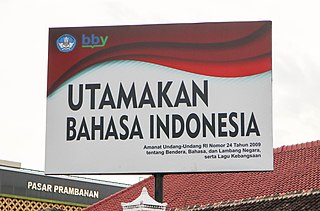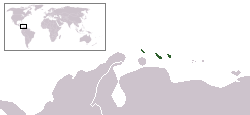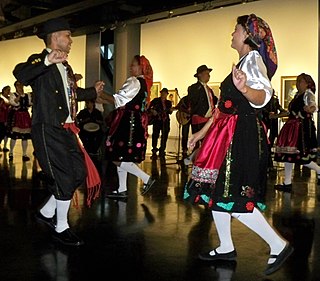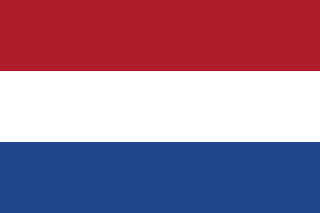
Indonesian is the official and national language of Indonesia. It is a standardized variety of Malay, an Austronesian language that has been used as a lingua franca in the multilingual Indonesian archipelago for centuries. With over 280 million inhabitants, Indonesia ranks as the fourth most populous nation globally. According to the 2020 census, over 97% of Indonesians are fluent in Indonesian, making it the largest language by number of speakers in Southeast Asia and one of the most widely spoken languages in the world. Indonesian vocabulary has been influenced by various native regional languages such as Javanese, Sundanese, Minangkabau, Balinese, Banjarese, and Buginese, as well as by foreign languages such as Arabic, Dutch, Portuguese, and English. Many borrowed words have been adapted to fit the phonetic and grammatical rules of Indonesian, enriching the language and reflecting Indonesia's diverse linguistic heritage.

Malay is an Austronesian language that is an official language of Brunei, Malaysia, and Singapore. Indonesian, a standardized Malay-based national variety, is the official language of Indonesia and is one of working languages in East Timor. Malay is also spoken as a regional language of ethnic Malays in Indonesia and the southern part of Thailand. Altogether, it is spoken by 290 million people across Maritime Southeast Asia.

Papiamento or Papiamentu is a Portuguese-based creole language spoken in the Dutch Caribbean. It is the most widely spoken language on the ABC islands.

Javanese is an Austronesian language spoken primarily by the Javanese people from the central and eastern parts of the island of Java, Indonesia. There are also pockets of Javanese speakers on the northern coast of western Java. It is the native language of more than 68 million people.

Portuguese creoles are creole languages which have Portuguese as their substantial lexifier. The most widely-spoken creoles influenced by Portuguese are Cape Verdean Creole, Guinea-Bissau Creole and Papiamento.
Papia Kristang or Kristang is a creole language spoken by the Kristang, a community of people of mixed Portuguese and indigenous Malay ancestry, chiefly in Malaysia (Malacca), Singapore and Perth, Australia.

In addition to its classical and modern literary form, Malay had various regional dialects established after the rise of the Srivijaya empire in Sumatra, Indonesia. Also, Malay spread through interethnic contact and trade across the south East Asia Archipelago as far as the Philippines. That contact resulted in a lingua franca that was called Bazaar Malay or low Malay and in Malay Melayu Pasar. It is generally believed that Bazaar Malay was a pidgin, influenced by contact among Malay, Hokkien, Portuguese, and Dutch traders.

The Kristang are a creole and indigenous ethnic group of people of primarily Portuguese and Malay descent, with substantial Dutch, British, Jewish, Chinese, and Indian ancestry. They are based mostly in Malaysia, Singapore, and Australia, the last being due to significant emigration in the second half of the twentieth century. People of this ethnicity also have, besides Malay and Portuguese, Dutch ancestry due to intermarriages, which is common among the Kristang. In addition, due to persecution by the Portuguese Inquisition in the region, a lot of the Jews of Malacca assimilated into the Kristang community. The creole group arose in Malacca between the 16th and 17th centuries, when the city was a port and base of the Portuguese Empire. Today the Malaysian government classifies them as Portuguese-Eurasians; in Singapore, they are primarily known as Kristang. Today, elements of Kristang culture and identity, especially the Kristang language, which is classified as critically endangered by the UNESCO Red Book of Endangered Languages, are currently undergoing cultural and language revitalisation in both Malaysia and Singapore. The current 13th Kabesa or singular non-hereditary leader of the community worldwide and in Singapore is the Kristang Singaporean science fiction writer and linguist Kevin Martens Wong, while the current Regedor or Headman of the Portuguese Settlement of Malacca, the original, geographical, cultural and spiritual centre of the Malacca Portuguese identity, is Oliver Lopez.

The Mardijker people refer to an ethnic community in the Dutch East Indies made up of descendants of freed slaves. They could be found at all major trading posts in the East Indies. They were mostly Christian, of various ethnicities from conquered Portuguese and Spanish territories, and some with European ancestry. They spoke Mardijker Creole, a Portuguese-based creole, which has influenced the modern Indonesian language.

The Ambonese, are an ethnic group of mixed Austronesian and Melanesian origin. They are evenly divided between Muslims and Christians. The Ambonese are from Ambon Island in Maluku, an island group east of Sulawesi and north of Timor in Indonesia. They also live on the southwest of Seram Island; which is part of the Moluccas, Java, Western New Guinea, and other regions of Indonesia. Additionally, there are about 35,000 Ambonese people living in the Netherlands. By the end of the 20th century, there were 258,331 Ambonese people living in Ambon, Maluku.

Malay was first used in the first millennia known as Old Malay, a part of the Austronesian language family. Over a period of two millennia, Malay has undergone various stages of development that derived from different layers of foreign influences through international trade, religious expansion, colonisation and developments of new socio-political trends. The oldest form of Malay is descended from the Proto-Malayo-Polynesian language spoken by the earliest Austronesian settlers in Southeast Asia. This form would later evolve into Old Malay when Indian cultures and religions began penetrating the region, most probably using the Kawi and Rencong scripts, some linguistic researchers say. Old Malay contained some terms that exist today, but are unintelligible to modern speakers, while the modern language is already largely recognisable in written Classical Malay of 1303 CE.
Petjo, also known as Petjoh, Petjok, Pecok, Petjoek is a Dutch-based creole language that originated among the Indos, people of mixed Dutch and Indonesian ancestry in the former Dutch East Indies. The language has influences from Dutch and then depending on the region Javanese, Malay, Sundanese and Betawi. Its speakers presently live mostly in Indonesia and the Netherlands. The language is expected to become gradually extinct by the end of the 21st century, due to Indos' shift toward Indonesian in Indonesia and Dutch in the Netherlands.

Betawi, also known as Betawi Malay, Jakartan Malay, or Batavian Malay, is the spoken language of the Betawi people in Jakarta, Indonesia. It is the native language of perhaps 5 million people; a precise number is difficult to determine due to the vague use of the name.

Macanese Portuguese is a Portuguese dialect spoken in Macau, where Portuguese is co-official with Cantonese. Macanese Portuguese is spoken, to some degree either natively or as a second language, by roughly 2.3% of the population of Macau. It should not be confused with Macanese language, a distinct Portuguese creole that developed in Macau during the Portuguese rule.

Dutch is a West Germanic language of the Indo-European language family, spoken by about 25 million people as a first language and 5 million as a second language and is the third most spoken Germanic language. In Europe, Dutch is the native language of most of the population of the Netherlands and Flanders. Dutch was one of the official languages of South Africa until 1925, when it was replaced by Afrikaans, a separate but partially mutually intelligible daughter language of Dutch. Afrikaans, depending on the definition used, may be considered a sister language, spoken, to some degree, by at least 16 million people, mainly in South Africa and Namibia, and evolving from Cape Dutch dialects.

The Dutch East Indies, also known as the Netherlands East Indies, was a Dutch colony with territory mostly comprising the modern state of Indonesia, which declared independence on 17 August 1945. Following the Indonesian War of Independence, Indonesia and the Netherlands made peace in 1949. In the Anglo-Dutch Treaty of 1824, the Dutch ceded the governorate of Dutch Malacca to Britain, leading to its eventual incorporation into Malacca (state) of modern Malaysia.

Indo people are a Eurasian people of mixed Asian and European descent. Through the 16th-18th centuries, they were known by the name Mestiço. To this day, they form one of the largest Eurasian communities in the world. The early beginning of this community started with the arrival of Portuguese traders in South East Asia in the 16th century. The second large wave started with the arrival of the Dutch East India Company (VOC) employees in the 17th century and throughout the 18th century. Even though the VOC is often considered a state within a state, formal colonisation by the Dutch only commenced in the 19th century.

Moluccans are the Austronesian and Ambonese Malay-speaking ethnic groups indigenous to the Maluku Islands, Eastern Indonesia. The region was historically known as the Spice Islands, and today consists of two Indonesian provinces of Maluku and North Maluku. As such, "Moluccans" is used as a blanket term for the various ethnic and linguistic groups native to the islands.
Malay spoken by a minority of Filipinos, particularly in the Palawan, Sulu Archipelago and parts of Mindanao, mostly in the form of trade and creole languages, such as Sabah Malay.

















